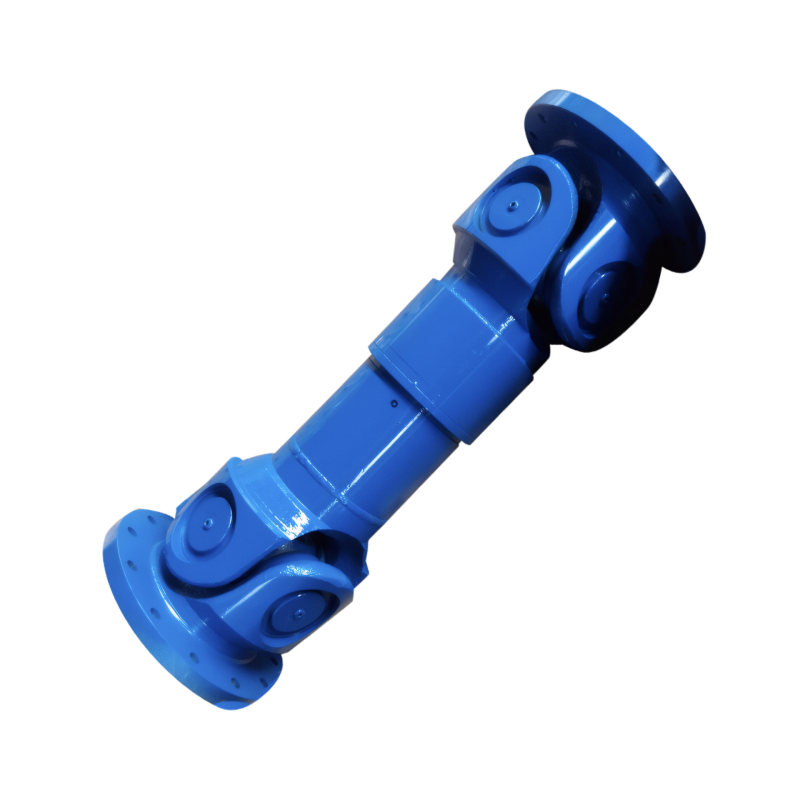The structure of the middle support of the drive shaft
Structural Design of Transmission Shaft Intermediate Supports in Mechanical Systems
Transmission shaft intermediate supports play a crucial role in maintaining alignment and reducing vibration in long-span drivetrains, ensuring reliable power transmission across automotive, industrial, and heavy machinery applications. These components absorb dynamic loads, compensate for thermal expansion, and prevent premature wear on connected bearings and gears. Understanding their structural variations helps engineers optimize system performance under diverse operating conditions.
Radial Bearing-Based Support Systems
The most common intermediate support design incorporates radial bearings to carry shaft loads perpendicular to its axis. These bearings typically feature inner races pressed onto the shaft and outer races seated in a housing, with rolling elements like balls or rollers distributing load evenly. The housing is mounted to the vehicle chassis or equipment frame using vibration-damping mounts, which isolate structural vibrations from the rotating assembly. In automotive applications, this arrangement supports driveshafts spanning distances between the transmission and differential, minimizing angular misalignment that could cause universal joint failure.
Bearing Selection Criteria for Radial Supports
Material compatibility between bearing components and lubrication type significantly impacts service life. High-speed applications often use ceramic hybrid bearings with silicon nitride rolling elements, which reduce friction and withstand higher temperatures than steel alternatives. For heavy-duty trucks, tapered roller bearings are preferred due to their ability to handle combined radial and axial loads from driveline torque reactions. Engineers must also consider bearing preload settings—too much compression increases rolling resistance, while insufficient preload allows play that accelerates wear.
Hydrodynamic Bearing Configurations
In high-precision or high-load systems, hydrodynamic bearings provide superior damping and load capacity compared to rolling elements. These designs use a thin film of lubricant between the shaft and bearing surface to create a pressure-supported load path. The lubricant, typically synthetic oil or water-glycol mixtures, is continuously pumped through channels in the bearing housing to maintain consistent film thickness. This approach eliminates metal-to-metal contact, reducing noise and extending component life in applications like marine propulsion systems, where saltwater corrosion resistance is critical.
Thermal Management in Hydrodynamic Supports
Efficient heat dissipation is essential to prevent lubricant breakdown. Bearing housings often incorporate cooling fins or integrated heat exchangers to maintain optimal operating temperatures. In wind turbine gearboxes, where intermediate supports handle multi-megawatt torque loads, temperature sensors embedded in the bearing monitor lubricant viscosity in real time. Automated cooling systems adjust flow rates based on sensor data, ensuring consistent performance across varying wind speeds and ambient temperatures.
Elastomeric Damping Mounts Integration
Many intermediate supports combine bearing assemblies with elastomeric mounts to enhance vibration isolation. These mounts use natural or synthetic rubber compounds with varying durometer ratings to absorb specific frequency ranges of driveline vibrations. The elastomer is typically bonded to metal sleeves that bolt to both the bearing housing and chassis, creating a flexible connection that reduces noise transmission to the vehicle cabin. In passenger cars, this design improves ride comfort by dampening driveshaft-induced resonances at idle and during gear shifts.
Dynamic Response Optimization
Mount stiffness directly affects system natural frequencies. Finite element analysis (FEA) helps engineers model the interaction between the shaft, support, and chassis to avoid resonance conditions that could amplify vibrations. For off-road vehicles, where driveline loads fluctuate dramatically, two-stage elastomeric mounts are used—a softer outer layer absorbs low-frequency impacts, while a firmer inner layer controls high-frequency vibrations. This layered approach extends mount life by preventing excessive deformation under extreme conditions.
Adjustable Support Mechanisms for Thermal Compensation
Long transmission shafts experience significant thermal expansion during operation, which can alter bearing preload and alignment. Adjustable intermediate supports incorporate threaded collars or eccentric bushings that allow technicians to fine-tune bearing positions after installation. These mechanisms compensate for manufacturing tolerances and thermal growth, ensuring consistent load distribution throughout the shaft’s operating temperature range. In locomotive drivetrains, where ambient temperatures can vary from -40°C to +50°C, adjustable supports maintain optimal bearing clearances without requiring disassembly.
Maintenance Accessibility Considerations
Design simplicity enhances serviceability. Quick-release levers or captive nuts on adjustable supports enable field adjustments without specialized tools, reducing downtime during routine maintenance. Some designs integrate visual indicators that show when the support has reached its adjustment limit, preventing over-tightening that could damage components. In mining equipment, where dust and debris are prevalent, sealed adjustment mechanisms with O-ring grooves protect internal threads from contamination, extending service intervals.
 Customized design of drive shafts for special vehicles
Customized design of drive shafts for special vehicles
 The durability of the drive shaft for off-road vehicles
The durability of the drive shaft for off-road vehicles
 Introduction to the structural strength of truck drive shaft
Introduction to the structural strength of truck drive shaft
 The layout of the drive shaft for a four-wheel drive vehicle
The layout of the drive shaft for a four-wheel drive vehicle
 简体中文
简体中文 English
English
